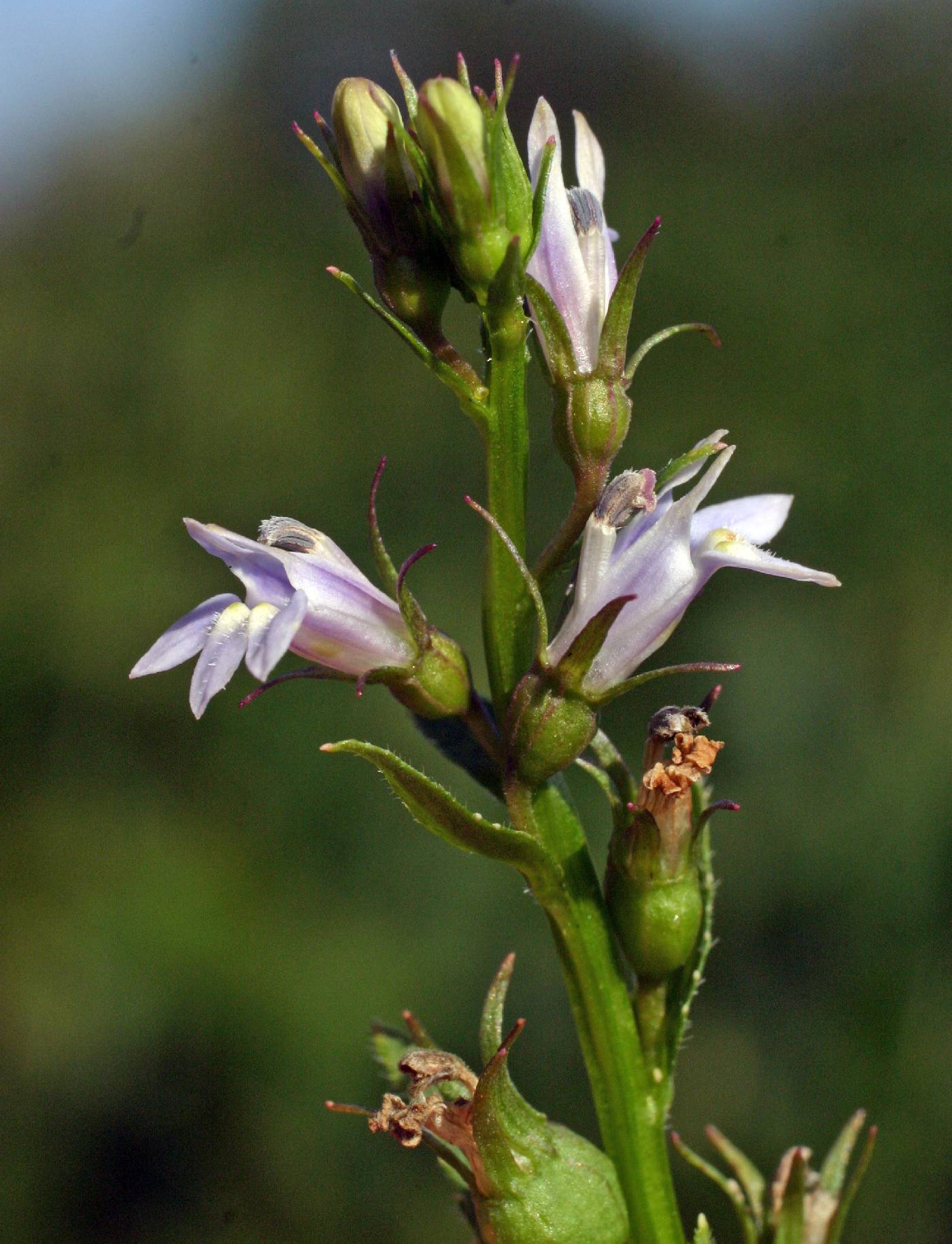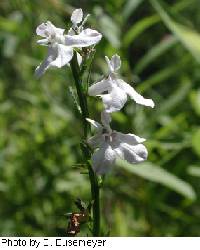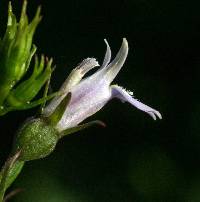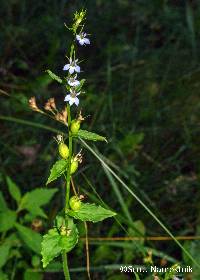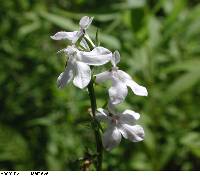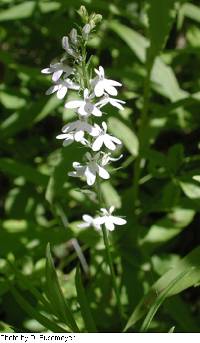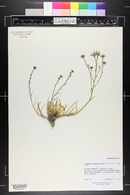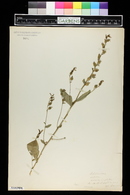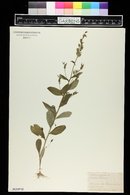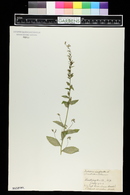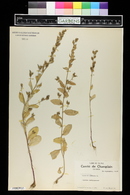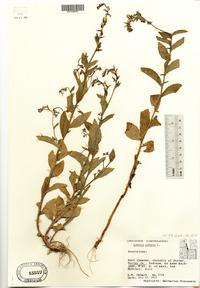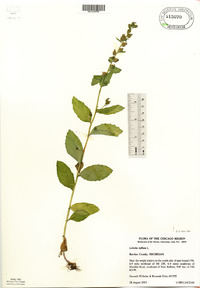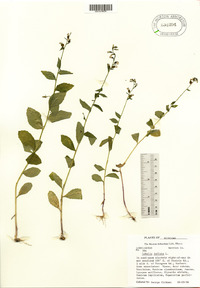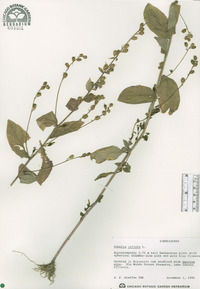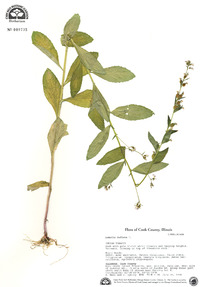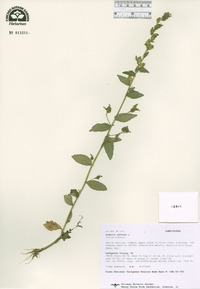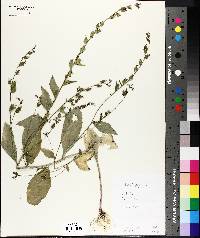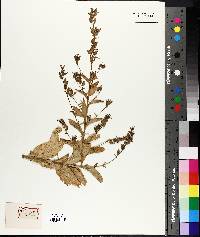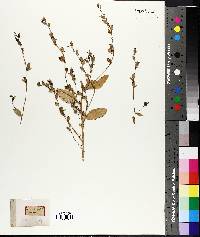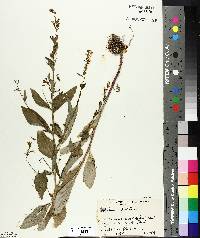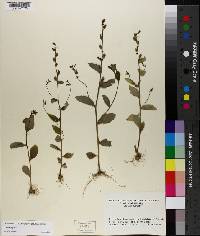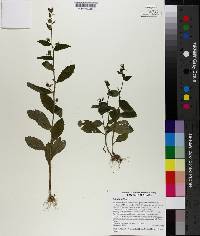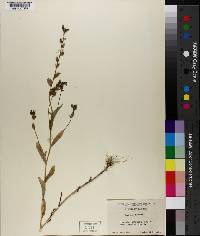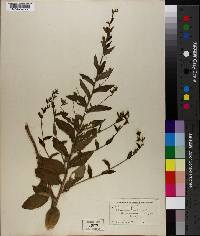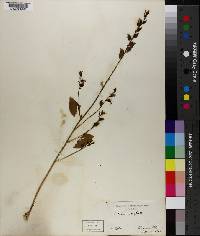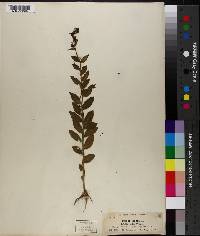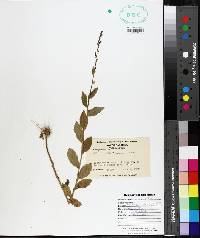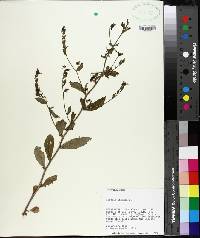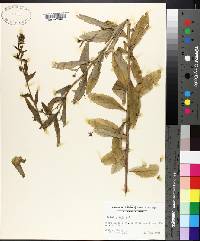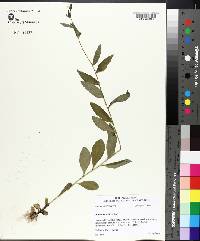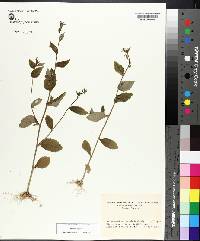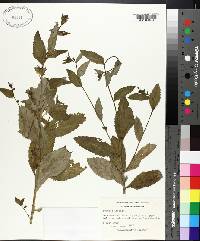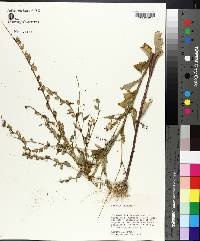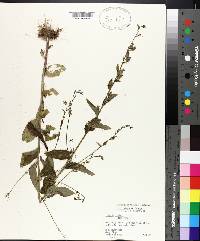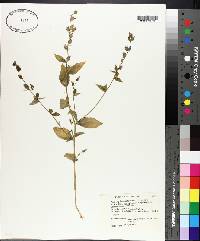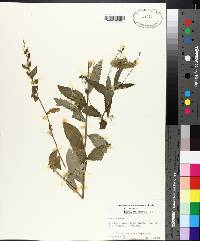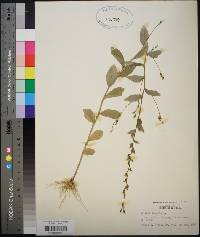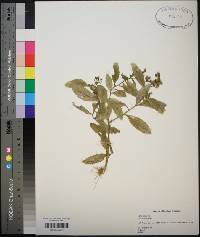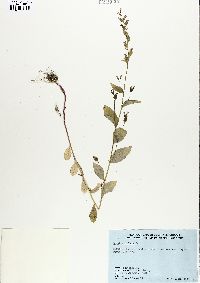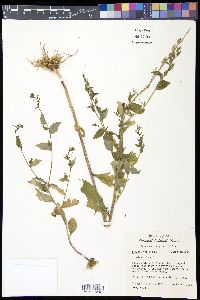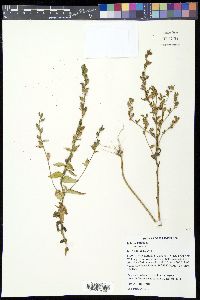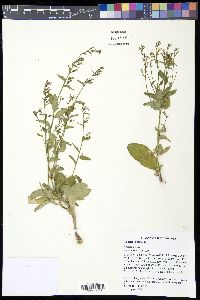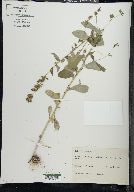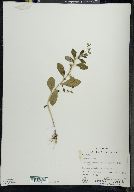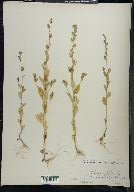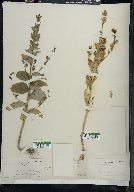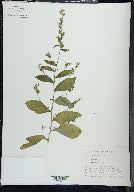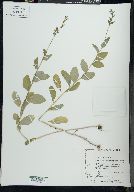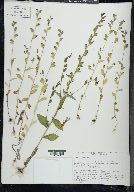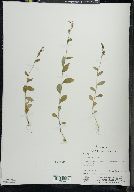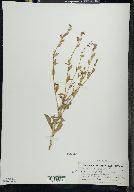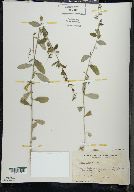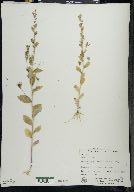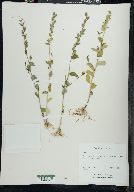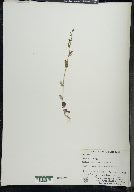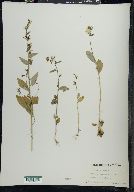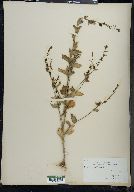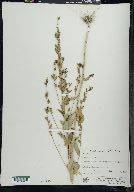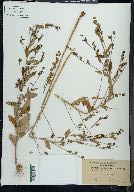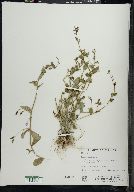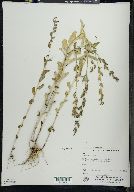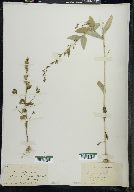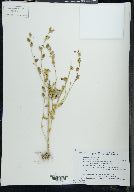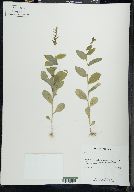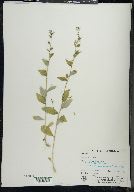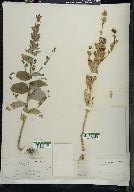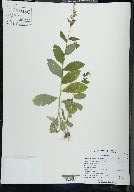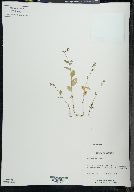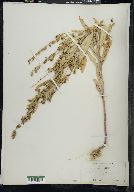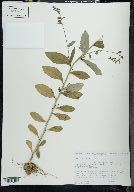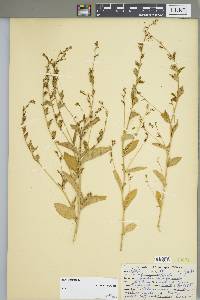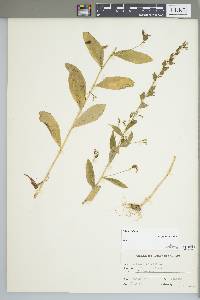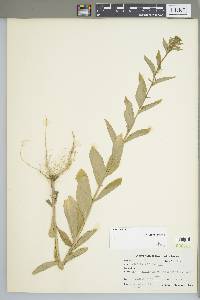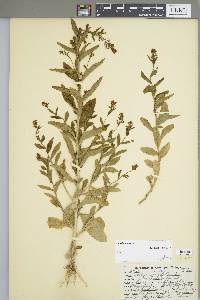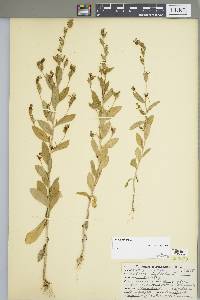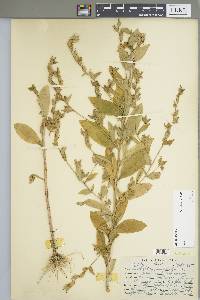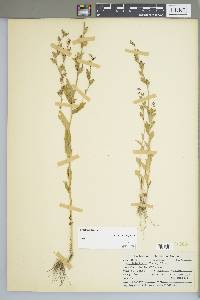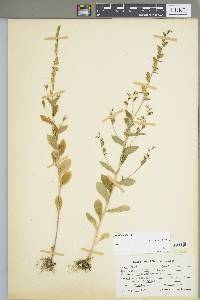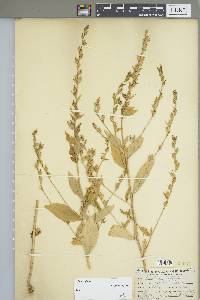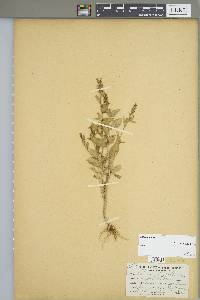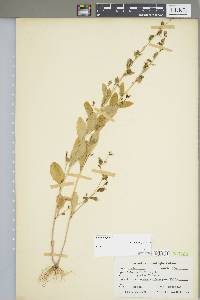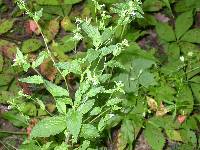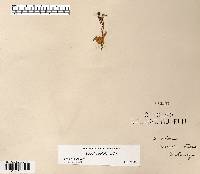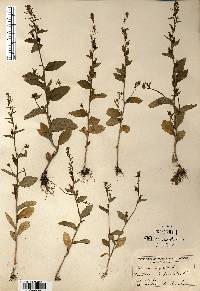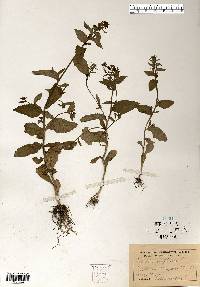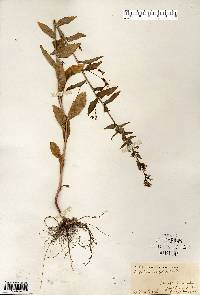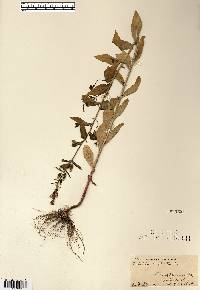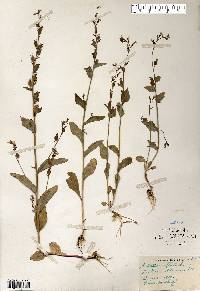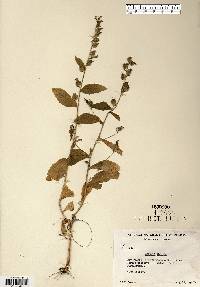Lobelia inflata
|
|
|
|
Family: Campanulaceae
Indian-Tobacco
[Lobelia michauxii Nutt.] |
Annual herb 15 cm - 1 m tall Stem: erect, branched, covered in long (up to 1 mm), irregular hairs at least at base (may be less hairy in inflorescence). Leaves: alternate, stalkless, 0.5 - 0.8 cm wide, 1.5 - 3.5 cm long, more or less egg-shaped, widest at or below middle, toothed, with upper and lower surfaces hairy, but upper surface sometimes only sparsely so. Inflorescence: terminating branches, erect, elongate, 10 - 20 cm tall, spike-like with individual flowers on ascending, minutely bristly, 3 - 9 mm long stalks with two, basal, tiny bracts (bracteoles) just above the subtending leaf-like bract. Flowers: pale violet to blue or white, small (less than 1.5 cm long), bilaterally symmetric with two-lobed upper lip and three-lobed lower lip. The flowers are actually flipped upside down so that the morphologic upper lip (of three spreading lobes) appears on the bottom of the flower, and the two shorter and erect lobes at the top of the flower are actually the morphologic lower lip. Sepals: five, but fused for most of their length into a bell-shaped tube, then separating into five, short (3 - 5 mm), linear lobes, which lack ear-like appendages (auricles) between their bases. The bell-shaped sepal tube becomes very inflated in fruit. Petals: five, but fused at base into a tube, then separating into two lips with somewhat elliptic lobes. The "upper" lip (morphologic lower) has two, somewhat erect, 6 - 8 mm long, pointed lobes with a beard of hairs near their base. "Lower" lip (morphologic upper) of three, 6 - 8 mm long, spreading lobes. Stamens: five, but fused into a tube with two anthers bearded at tip and shorter than the other three. Pistil: with a two-chambered, inferior ovary; one long style positioned through center of stamen tube; and a two-lobed, often fringed stigma. As the style elongates up through the stamen tube, it pushes the pollen out of the anthers. Fruit: several, two-chambered, nearly 1 cm wide, egg-shaped to rounded, many-seeded capsules. The united portions of the sepals and petals enclose the entire capsule and become strongly inflated as the fruit matures. Similar species: Lobelia inflata can be similar to L. spicata, but that species has stem leaves that tend to be widest beyond the middle, the stem is unbranched, and the sepal lobes often have small ear-like appendages (auricles) between them. Young or depauperate plants of L. inflata with narrower than normal leaves can be confused with L. kalmii, which also has somewhat inflated fruit, however that species has a hairless stem base and the bracteoles are located near the middle of the flower stalks, not the base. Flowering: June to October Habitat and ecology: Fairly common in woodlands, and usually found in moist shaded areas, but often in poor soils. This species can also be found in more weedy areas such as fields or waste places. Occurence in the Chicago region: native Notes: Lobelia inflata has the common name “Indian Tobacco” because Native Americans often smoked the plant to treat asthma and other respiratory ailments, however this can be dangerous since it contains poisonous narcotics. Author: The Field Museum Annual to 1 m, usually branched, loosely hairy throughout, or the upper part of the stem and upper surfaces of the lvs subglabrous or merely strigose; lvs sessile or subsessile, ovate-oblong to oblong-obovate, 5-8 נ1.5-3.5 cm, ±serrate; racemes terminating the branches, 1-2 dm; lower bracts foliaceous, the upper gradually reduced; pedicels 3-9 mm, bibracteolate at base; sep linear, 3-5 mm; auricles wanting; cor blue or white, 6-8 mm, the lower lip bearded at base within; fruiting hypanthium inflated, 7-11 נ3.5-8 mm; 2n=14. Open woods, or sometimes a garden-weed; P.E.I. to Minn., s. to Ga. and Miss. July-Oct. Poisonous. Gleason, Henry A. & Cronquist, Arthur J. 1991. Manual of vascular plants of northeastern United States and adjacent Canada. lxxv + 910 pp. ©The New York Botanical Garden. All rights reserved. Used by permission. From Flora of Indiana (1940) by Charles C. Deam The dried plant and seed of this species have been used in medicine for about one hundred and fifty years. The plant is known to the medical profession and to the laity as lobelia, and for this reason no other name should be used. Some authors call it indian tobacco but, since several other plants have the same name, it seems inadvisable to supplant a well known name by one which is misleading. Infrequent to frequent throughout the state in various situations. It is usually found in poor soils in open woods and fallow fields, and some times as a weed in cultivated fields. It is also found in rich soil and in dried-up sloughs. .…… Indiana Coefficient of Conservatism: C = 3 Wetland Indicator Status: FACU |
|
|
|

